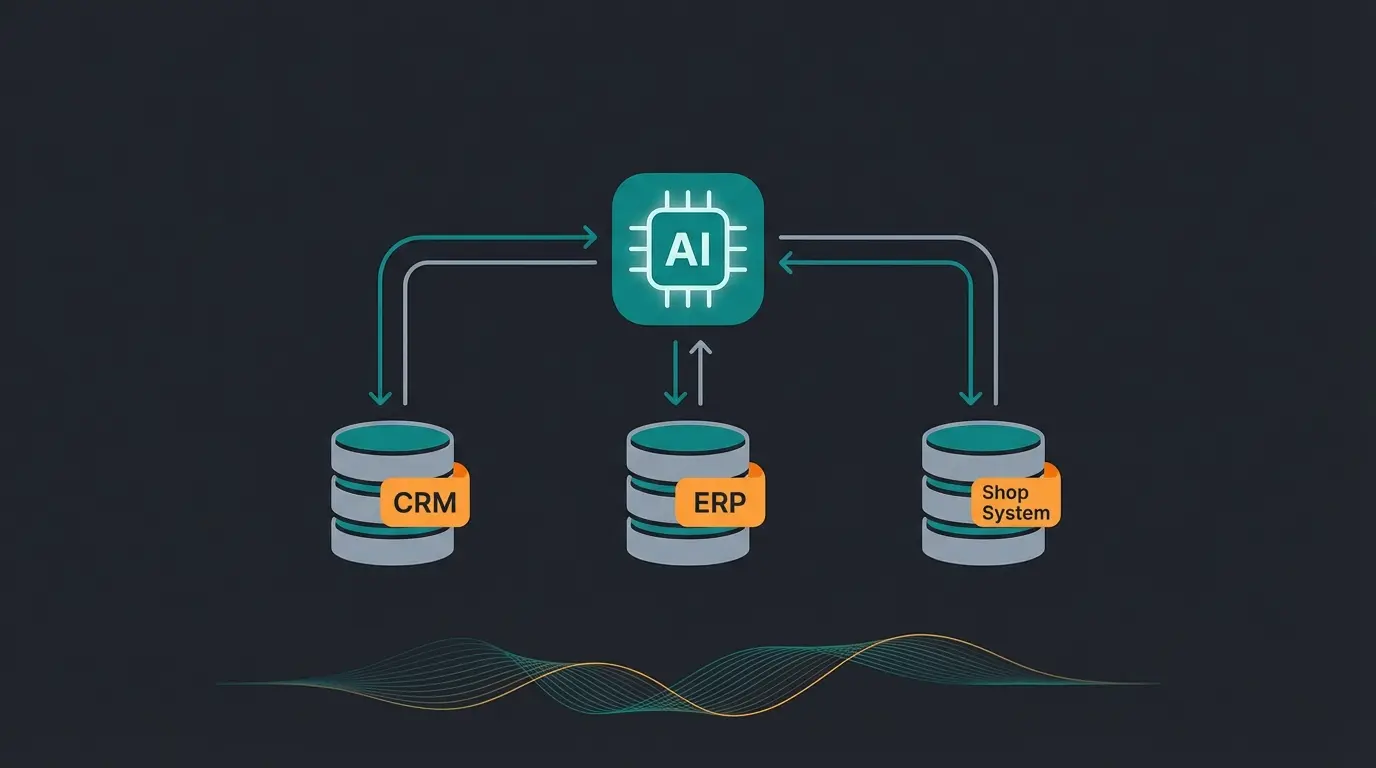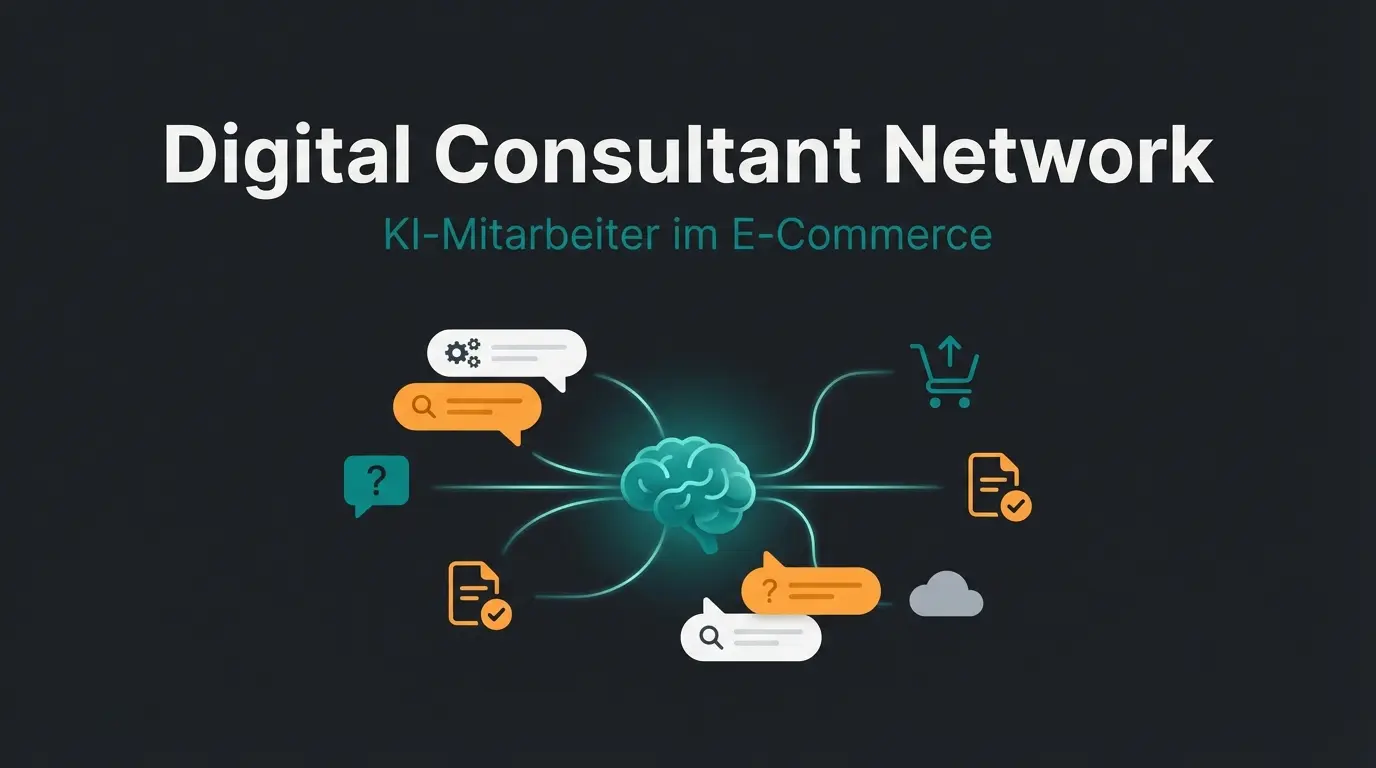Conversational AI in 2025: From Simple Chatbot to Digital Sales Consultant
Discover how Conversational AI is revolutionizing E-Commerce in 2025. Learn the difference between simple chatbots and digital sales consultants to boost revenue.
The Evolution of Customer Communication
In today's business world, the way companies communicate with their customers has fundamentally changed. Automated communication systems based on various types of artificial intelligence have become an indispensable tool for meeting rising customer expectations while simultaneously increasing operational efficiency. This development leads us from simple chatbots to advanced Conversational AI systems.
The evolution from chatbots to Conversational AI marks a significant advancement in customer communication. While traditional chatbots rely on pre-programmed rules and limited response options, Conversational AI systems utilize complex algorithms and machine learning to conduct more natural and context-aware conversations.
For companies, understanding the differences between these technologies is crucial. The choice between a simple chatbot and an advanced Conversational AI system can have significant impacts on customer satisfaction, customer service efficiency, and ultimately, business success.

Traditional Chatbots: Basics and Use Cases
Definition and Functionality of Rule-Based Systems
Traditional chatbots are computer-controlled dialogue systems based on predefined rules and patterns. They function by recognizing keywords or phrases in user inputs and reacting with pre-programmed responses. These systems are relatively simple to implement and are well-suited for answering frequently asked questions or performing simple tasks.
Typical Application Scenarios
Rule-based chatbots find application in various areas:
- Customer Service: Answering common questions about products or services
- E-Commerce: Support with product search or the ordering process
- IT Support: Help with simple technical problems or password resets
- Appointment Scheduling: Booking appointments or reservations
- Email: Interaction with customers via email to improve reachability and responsiveness
Pros and Cons of Traditional Chatbots
Traditional chatbots offer some benefits but also have their limitations:
Advantages: - Cost-effective implementation and maintenance - Fast response times for simple requests - 24/7 availability for basic support
Disadvantages: - Limited ability to understand complex or unexpected requests - Lack of flexibility in adapting to conversation context - Potentially frustrating user experience in case of misunderstandings
Despite their limitations, traditional chatbots can represent an effective solution for certain use cases. They are particularly suitable for companies aiming for simple, cost-effective automation of their customer communication without needing to conduct complex conversations.
Conversational AI: The Next Generation of Automated Communication
Conversational AI represents a significant leap forward in the development of automated communication systems. Unlike traditional chatbots, Conversational AI offers a much more advanced and natural interaction with users.
What is Conversational AI?
Conversational AI refers to technologies that enable computers to understand, process, and respond to human language. According to AWS, Conversational AI is "a technology that enables software to understand and respond to conversations in natural language, whether in spoken or written form."
Technological Foundations: NLP and Machine Learning
The functionality of Conversational AI is based on three main technologies:
- Natural Language Processing (NLP): Enables the analysis and interpretation of human language.
- Natural Language Understanding (NLU): Extracts meaning and intent from the text.
- Natural Language Generation (NLG): Generates naturally sounding responses.
These technologies work together to enable a deep understanding of the user context and generate appropriate responses. For example, the Fraunhofer IAIS develops intelligent dialogue systems built on knowledge-based language models that respect European data privacy standards.
User provides input via text or voice.
NLU analyzes the intent behind the words.
AI asks follow-up questions to narrow down needs (Guided Selling).
AI suggests specific products or solutions.
Technological Comparison: Chatbots vs. Conversational AI
To understand the differences between traditional chatbots and Conversational AI, a detailed comparison of their technological capabilities is required. While chatbots often work with simple keyword recognition and predefined responses, Conversational AI uses advanced NLP technologies to capture the context and nuances of human language. This allows for a deeper understanding of user queries and leads to more precise and relevant answers.
| Feature | Scripted Chatbot | Conversational AI |
|---|---|---|
| Understanding | Keywords only | Context & Intent (NLU) |
| Flexibility | Rigid Decision Tree | Dynamic Conversation |
| Maintenance | Manual updates required | Self-learning (ML) |
| Primary Goal | Deflect Tickets | Solve Problems / Close Sales |
Contextual Intelligence and Memory
A key advantage of Conversational AI is the ability to store and use context information across multiple interactions. While simple chatbots view each interaction in isolation, Conversational AI can refer back to previous conversations, ensuring more coherent and personalized communication.
Adaptability and Learning Potential
Traditional chatbots are generally static systems with limited customization options. In contrast, Conversational AI systems can learn from interactions and continuously improve their understanding and responses. This learning capability allows them to adapt to new situations and steadily increase the quality of interactions.
The Revolution: "Guided Selling" (Consulting vs. Processing)
This is where the true value of modern AI lies. Most companies stop at "Support Automation," viewing AI merely as a defensive tool to deflect tickets. However, the leading e-commerce players are using AI for Guided Selling—mimicking the behavior of a top salesperson in a physical store.
Consider the difference in user experience: The Bad Chatbot Approach: User: "I need a laptop." Bot: "Here is a link to our laptop category page." The Conversational AI Approach: User: "I need a laptop." AI: "I can help with that. What will you mainly use it for? Are you doing heavy video editing, or is it mostly for office work and browsing?" By asking clarifying questions, the AI guides the user to the perfect product, reducing the likelihood of returns and increasing trust.
Performance Comparison in Practice
The comparison between traditional chatbots and Conversational AI shows clear differences in practical application. These differences manifest particularly in three core areas:
Accuracy and Relevance of Responses
Conversational AI systems significantly outperform conventional chatbots in the precision of their answers. According to a study by Qualimero, advanced AI chatbots achieve an accuracy of up to 97% in product recommendations. This high hit rate results from the Conversational AI's ability to process contextual information and learn from large amounts of data.
In contrast, traditional chatbots are limited to predefined answers and can often only deliver simple, script-based reactions. This frequently leads to irrelevant or unsatisfactory answers, especially with more complex inquiries.
Stop frustrating users with rigid scripts. See how our AI Consultant can boost your sales.
See AI in ActionHandling Complex Requests
A key advantage of Conversational AI lies in its ability to handle complex and multi-step requests. These systems can capture and process various aspects of a question to generate a comprehensive answer. They are capable of recognizing relationships and combining information from different sources.
Top 3 Use Cases in Germany
Based on current market analysis, three dominant use cases have emerged for Conversational AI in the DACH region:
- Customer Service (Kundenservice): Automating FAQs remains the foundation. This handles the volume of "Where is my package?" queries, freeing up humans for complex issues.
- Product Consultation (Produktberatung): This is the growth engine. AI acts as a digital shop assistant, helping users navigate complex catalogs (e.g., finding the right ski boot based on calf width and skill level).
- After-Sales & Loyalty: Managing returns and warranties proactively. Instead of just processing a return, the AI can suggest an exchange for a better-fitting item, retaining the revenue.
Integration into Business Processes
Implementation Effort and Complexity
Integrating Chatbots or Conversational AI into business processes is a crucial step that must be carefully planned. Traditional chatbots often require less time and resources for setup as they are based on predefined rules. Conversational AI systems, however, typically require a more extensive implementation involving data integration, training on company-specific data, and customization of tone and voice.

Data Privacy and Trust (GDPR/DSGVO)
When integrating chatbots and especially Conversational AI, data privacy and security play a central role. The EU AI Act sets new requirements for the use of AI systems. In the German market, trust is paramount. To overcome the skepticism regarding "fake" human interactions, transparency is key:
- Data Protection: Ensure personal data is processed according to GDPR (DSGVO).
- Transparency: Clearly label the bot as an AI assistant, not a human.
- Security: Implement robust security measures to protect against unauthorized access.
Cost-Benefit Analysis
While Conversational AI carries higher initial costs due to advanced technology and training requirements, studies show these systems are often more cost-effective in the long run. They require less manual intervention and scale more efficiently. For instance, Neudorff achieved a 99.2% cost saving per chat with their AI employee Flora.
The Future of Conversational AI
The future of Conversational AI is promising. We are seeing a shift toward Generative AI (like ChatGPT integrated into shop systems) which allows for even more fluid content generation. Furthermore, the integration into the Internet of Things (IoT) will allow devices to communicate and execute automated processes. Companies that recognize these trends early—moving from simple support bots to comprehensive digital sales consultants—will gain significant competitive advantages.
A traditional chatbot follows a rigid, pre-scripted decision tree. Conversational AI uses Natural Language Understanding (NLU) to interpret user intent and context, allowing for dynamic, human-like conversations.
Yes, provided it is implemented correctly. Leading European providers ensure that data hosting and processing comply with strict GDPR (DSGVO) standards, often anonymizing data where necessary.
Absolutely. By acting as a 'Digital Sales Consultant,' the AI can ask qualifying questions and recommend specific products, significantly increasing conversion rates compared to passive search bars.
While simple chatbots can be live in days, a robust Conversational AI system typically takes a few weeks to train and integrate with your product catalog effectively.
Transform your customer experience from passive support to active selling. Get a free consultation on your AI strategy today.
Start Your Transformation
